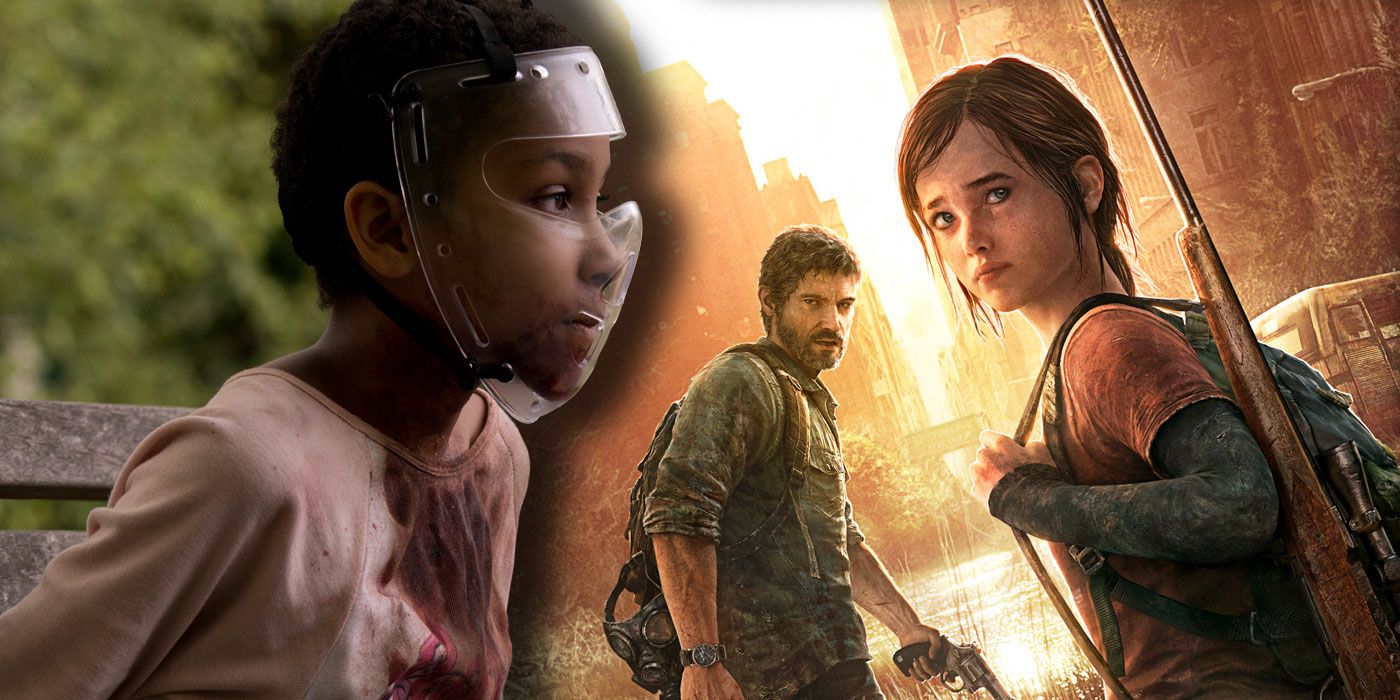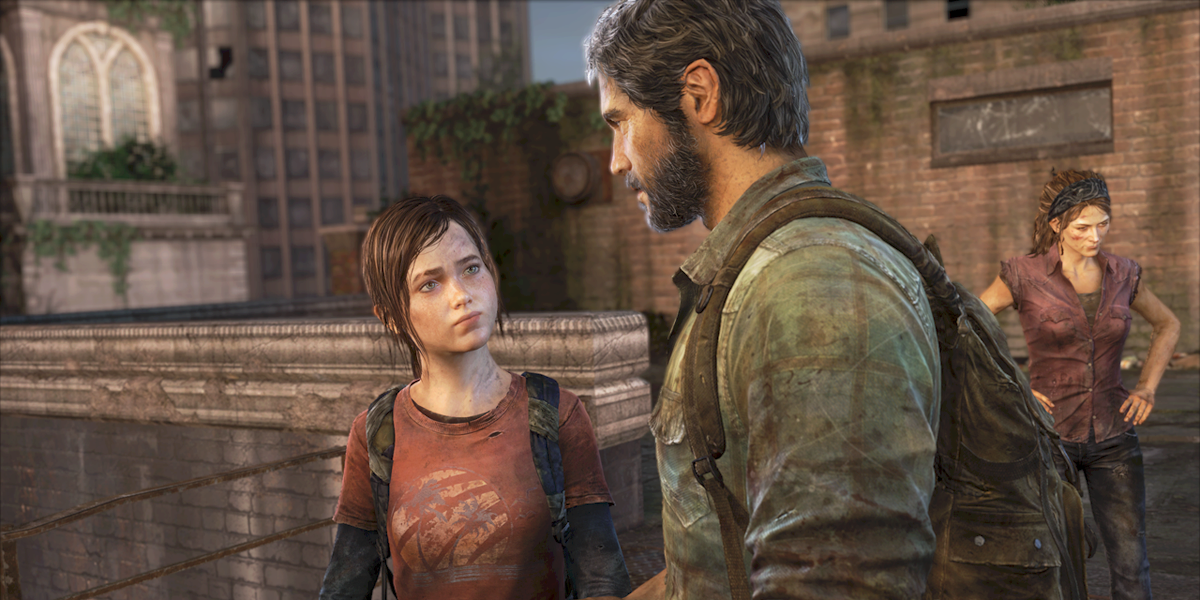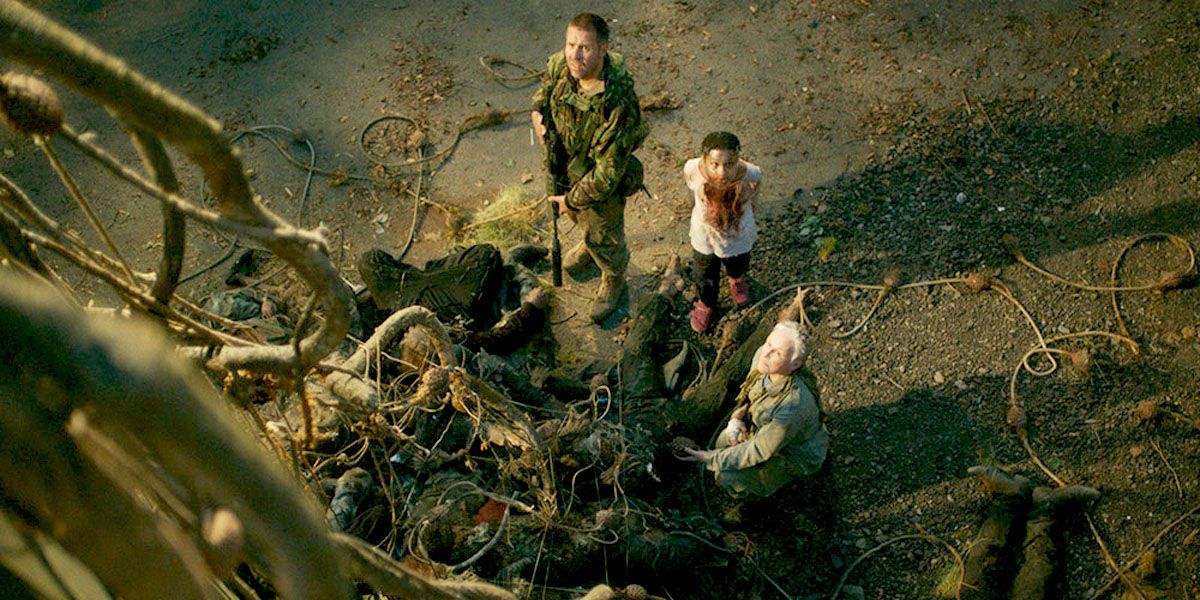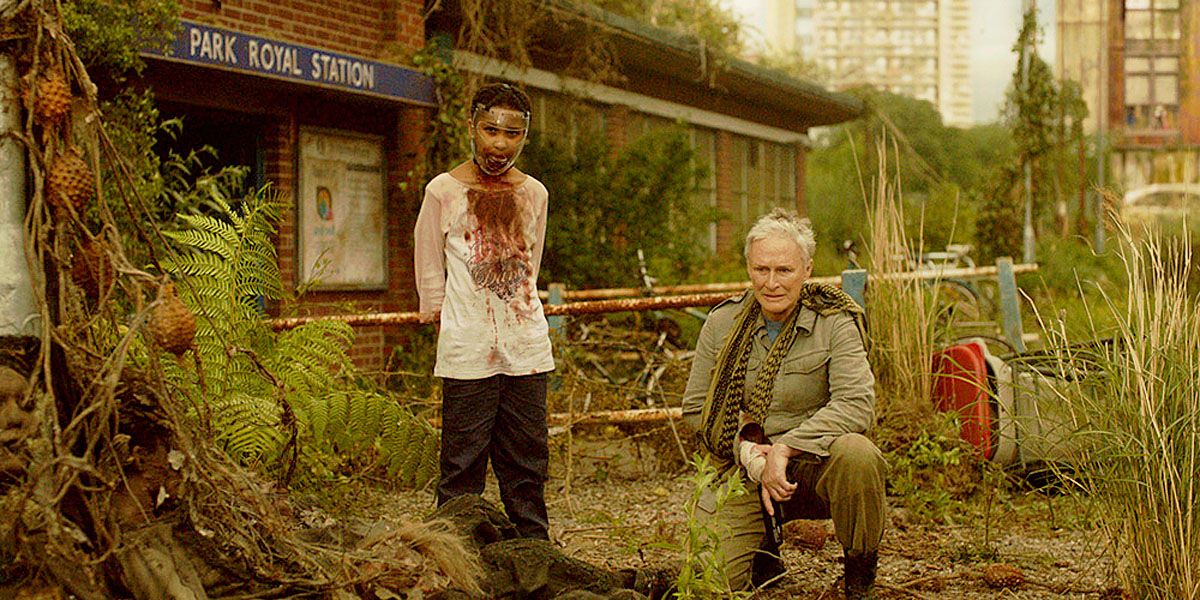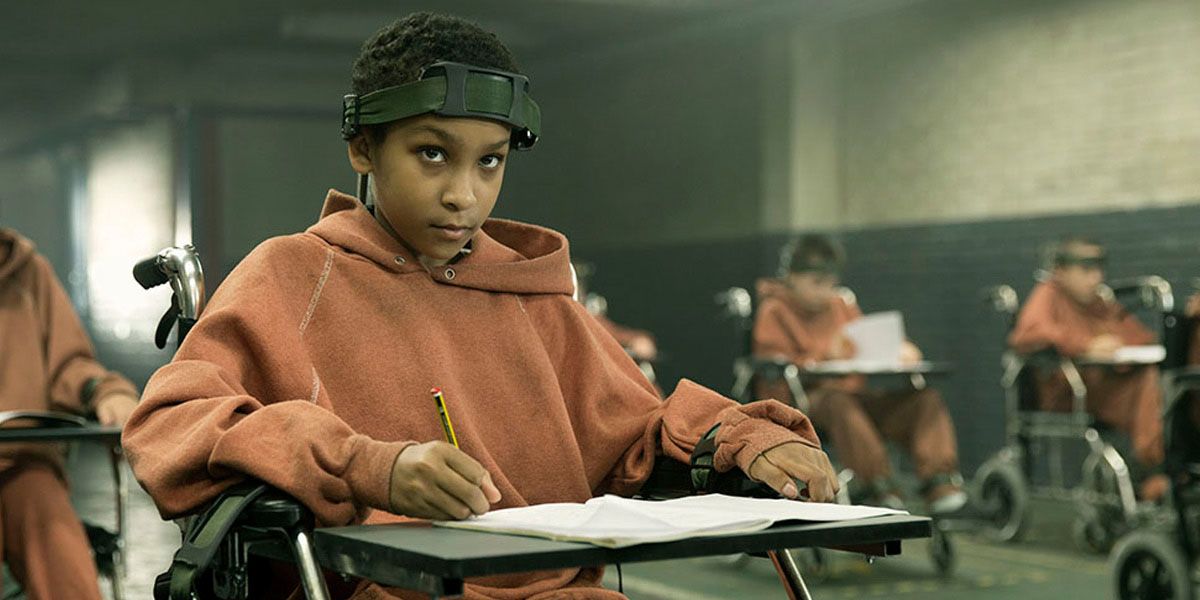Amid the whirlwind of blockbusters like “Logan,” “King: Skull Island” and “Beauty and the Beast,” you might be forgiven for missing the U.S. release of low-budget British horror film “The Girl with All the Gifts.” However, this post-apocalyptic drama, made for a mere $5 million, may be the closest we’ll come to a big-screen adaptation of the acclaimed survival-horror video game “The Last of Us.”
If you’ve never heard of “The Last of Us,” that probably means you’re not a dedicated gamer. Released in 2013, the title has a strong claim as the definitive game of the last console generation.
RELATED: Raimi Says "The Last of Us" Movie Is Still "Just Sitting There"
Set in a post-apocalyptic world where a fungal infection pandemic has led to societal collapse, “The Last of Us” transcends the mere mechanics of the survival-horror genre — the jump scares and gross-out moments, the puzzles to solve, maps to navigate and overpowered enemies that often take so much planning and resources to overcome that they’re frequently best avoided.
It also delivered something that surprisingly few video games seem to require: well-rounded characterization for its two primary protagonists, Joel (voiced by Troy Baker), a 40-something smuggler and father who loses his teen daughter at the outbreak of the infection, and Ellie (Ashley Johnson,) a street-smart 14-year-old whom Joel is charged with shepherding across the United States to a group known as the Fireflies.
The depth of their characterization, along with the game’s compelling narrative of parental hopes and duties in a post-apocalyptic world, helped “The Last of Us” to win plaudits and acclaim from fans and critics alike, and prompted speculation its story might also work as a feature film, where it could potentially reach a wider audience.
But after some excited talk and an initial flurry of activity, which included “Evil Dead” and “Spider-Man” filmmaker Sam Rami signing on to produce a film based on a script by the game’s co-director Neil Druckman, the project quickly descended into development hell, leaving fans only to speculate about what a “Last of Us” adaptation might look like.
Enter veteran comics writer Mike Carey.
Best known for his acclaimed runs on such titles as DC/Vertigo’s “Hellblazer” and “Lucifer” and Marvel’s “X-Men,” Carey wrote his own tale of post-apocalyptic horror and fungal infections, “The Girl with All the Gifts,” (a title that references the Greek myth of Pandora) concurrently as both a novel and screenplay.
Although they’re entirely separate, the 2014 novel and the subsequent film share a lot on common with “The Last of Us”; they even have a similar visual aesthetic in dilapidated buildings overgrown with vines, grasses and trees as the post-human world slowly returns to nature. Perhaps it’s inevitable that in a post-apocalyptic setting everything quickly becomes overgrown by the shared contrasting palette of red brick and verdant greenery.
“The Last of Us,” and “The Girl with All the Gifts” both draw inspiration from the life cycle of the same fungus, Ophiocordyceps Unilateralis. In both works, the fungus has come to infect humans, transforming them into zombie-like creatures that possess an infectious bite and that feast on flesh. However, the mechanics and life cycle of these fictional fungal infections diverge between the two stories.
RELATED: "The Last of Us II" Announced With First Trailer
In “The Last of Us,” the fungus continues to grow in the hosts, affecting their cognition and reasoning abilities and ultimately their senses, with late-stage infected, known as clickers, effectively blind and forced to hunt by sound. Once the “The Last of Us” fungus has consumed its host and can no longer move, it reproduces through the release of airborne spores.
In the narrative of “The Girl with All the Gifts,” only the first generation of the infected grows until the host is consumed. The Infected here are called “hungries” due to their lust for flesh. They don’t produce spores directly, but once it has fully consumed its host, the fungus produces spore-containing seedpods with a hard shell that only breaks down in fire or extreme dampness.
There is also a second generation of “hungries” that became infected in the womb, eventually eating their way out of their hosts. Unlike the first generation, second-gen “hungries” are not mindless zombie-like creatures: They retain their intelligence and appear able to live in some kind of commensal symbiosis, although they still possess the all-consuming appetite for flesh the fungus induces.
The titular girl in Carey’s story, Melanie (played the film by Sennia Nanua), is one of these second-generation infected. Younger than Ellie, Melanie is about 12 years old, but while she comes across as particularly bright, she’s not unique: When we’re introduced to her, Melanie is part of a class of 20 second-gen infected for whom the fungus is not lethal. By contrast, in “The Last of Us,” Ellie is, as far as the narrative leads us to believe, utterly unique in her immunity.
For both girls, their bodies contain something that holds the key toward the isolation of a cure to the infection and, crucially for both narratives, obtaining that cure is portrayed as something that would come at the cost of each girl’s life. It’s the way in which each narrative approaches this central quandary that differs significantly. Ellie isn’t introduced to the narrative until about half an hour into the game’s opening act, whereas in the film, Melanie’s is the first voice we hear and face we see.
Ellie’s belated arrival helps its designers subtly manipulate the player expectations through the structural conventions of the medium. In video games, the player is accustomed to the protagonist as hero or, occasionally, as an overt villain. But “The Last of Us” introduces Joel as a sympathetic parental figure – the literal father of the doomed Sarah – and the first player-controlled character in the game.
The narrative later demonstrates, and occasionally overtly states, that he’s a violent smuggler and a survivor; he kills humans as readily as he does the infected. A high body count is so frequently baked into the structure of video games that regular gamers often don’t think twice about it, but here it’s an important indicator of the player-character’s inherently selfish drives.
Another staple of the medium is the escort mission, were the player must shepherd a non-player character through a map from point A to point B. Although the player assumes control of Ellie in later stages, her agency as the NPC is largely irrelevant. Consequently, when Joel is initially tasked with shepherding Ellie to her destination, the reasons for doing so are almost irrelevant, it’s only shortly after the mission begins that it’s revealed Ellie is both infected and immune, and the overarching plot of her importance to developing a cure is revealed.
Even then, the notion that Ellie is fully aware of the personal consequences of her mission -- that she will have to die for any cure to be extracted from her -- are brushed over with the lashing of action, shooting and activity that is the meat of any video game. That also paves the way for the game’s dramatic conclusion, in which Joel, upon learning Ellie’s fate at the hands of the doctors he delivered her to, promptly embarks on a mission to rescue his surrogate daughter from the Firefly medical facility.
RELATED: "The Girl with All the Gifts" Trailer Promises a New Kind of Zombie Movie
After their escape, Joel spins a lie to Ellie that the Fireflies actually stopped looking for a cure. It's a supremely selfish move, motivated more by his attachment to Ellie as a replacement for the daughter he lost than for her wellbeing. Moreover, it actively seeks to deny Ellie any agency in her decision to sacrifice herself for the cause of finding a cure. The extent to which Ellie believes Joel is left to the player, or the inevitable sequel, to decide.
By contrast, the central concern in “The Girl with All the Gifts” isn’t just whether Melanie is willing to sacrifice herself to help find a cure for humanity, but whether she and her fellow second-generation brothers and sisters are human at all. That’s a strong recurring theme in a variety of zombie films, particularly those of George Romero, which frequently use the menacing, unreasonable otherness of the walking dead as a metaphor for society’s attitudes toward its “underclass,” be they non-whites, working-class consumers or the poor.
In Melanie’s case, the fear is of a younger generation, different from us, capable of perpetrating terrible acts. Possibly they are even a threat to our continued existence, as much as they are the key to our future. Her humanity is questioned and denied as she’s secured into a wheelchair, called a “frigging abortion” and wheeled into a classroom in a test facility where the blind search for a cure is carried out.
In the film, Melanie is also black, a stark contrast to all the other authority figures in the movie. Paddy Considine’s Sgt. Parks, Glen Close’s Dr. Caroline Caldwell and even Gemma Arterton’s beloved teacher Miss Justineau, are all white.
The second-generation “hungries” eventually prove their humanity through their intelligence, learning to craft traps for uninfected humans with subterfuge and cunning. Melanie too, learns the power of her intelligence, enabling her to face down and outwit the leader of the feral second-genners, who, like Negan in “The Walking Dead,” carries a baseball bat that serves as both a weapon and symbol of authority, to rescue Parks and Justineau.
But unlike Ellie, at the film’s climax Melanie doesn’t chose the path of self-sacrifice — rather, she confronts the dying Dr. Caldwell, asking “Why should it be us who die for you?” Melanie then takes matters into her own hands and sets fire to a mass of seedpods, releasing the spores that will doom the uninfected, although she ensures her treasured teacher will survive to help her instruct her emerging generation.
Ultimately, Melanie’s story is her own. And while both Ellie and Melanie grow in their experience and confidence in their abilities throughout their respective, Melanie has more agency. She takes ownership of her actions and her life while Ellie is left hanging on to the lies of her weird, violent and massively flawed substitute father.
Such a situation might not make for a great entry point into young adulthood, but it sure does serve as a fantastic setup to a very angsty sequel.
Meanwhile, Melanie, in “The Girl with All The Gifts,” inherits the Earth, definitively placing her own mark upon it, and upon the plot of “young female protagonist on a fungally infected post-apocalypse planet.” Or, as Melanie herself could say to “The Last of Us,” “It's not over. It's just not yours anymore.”

